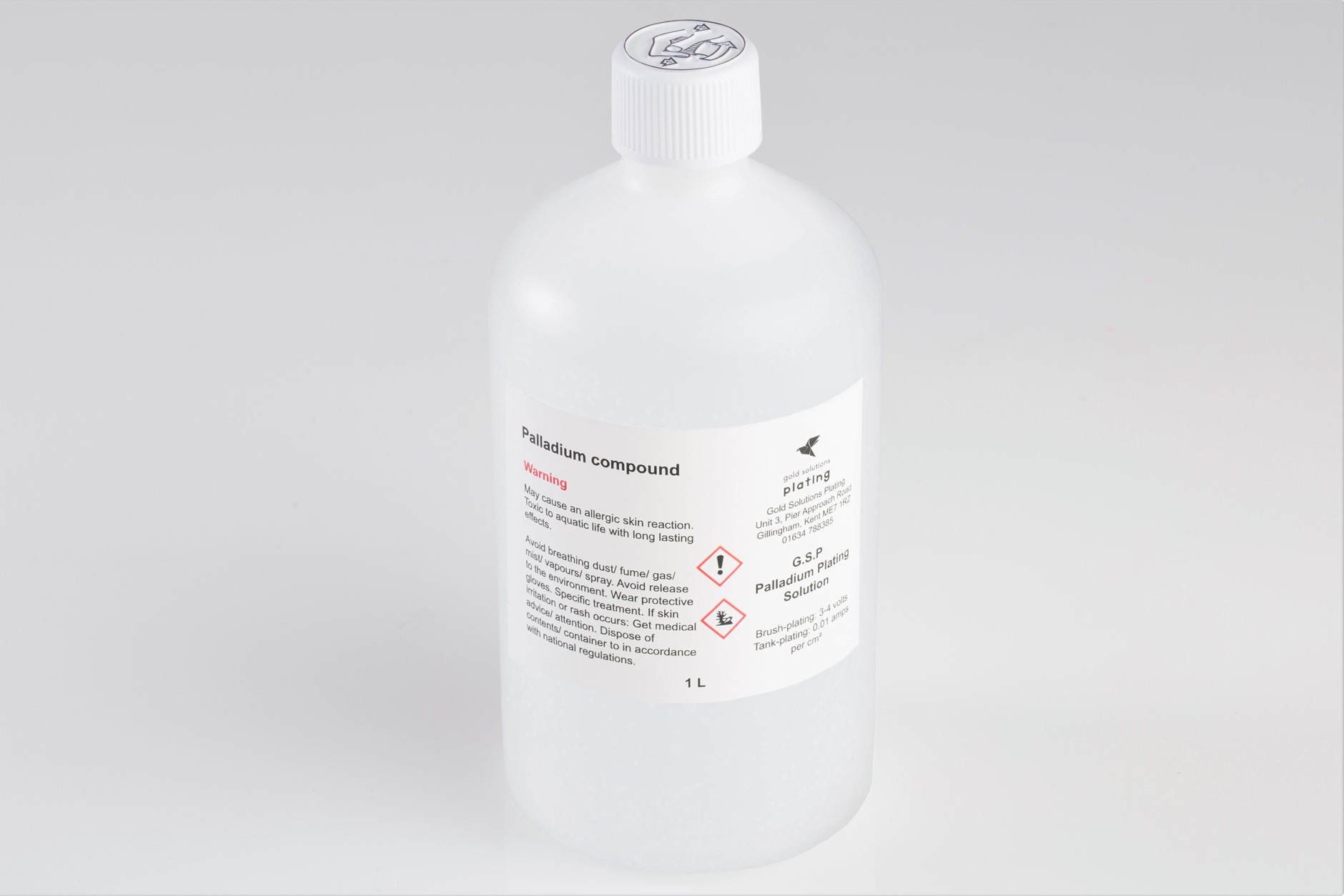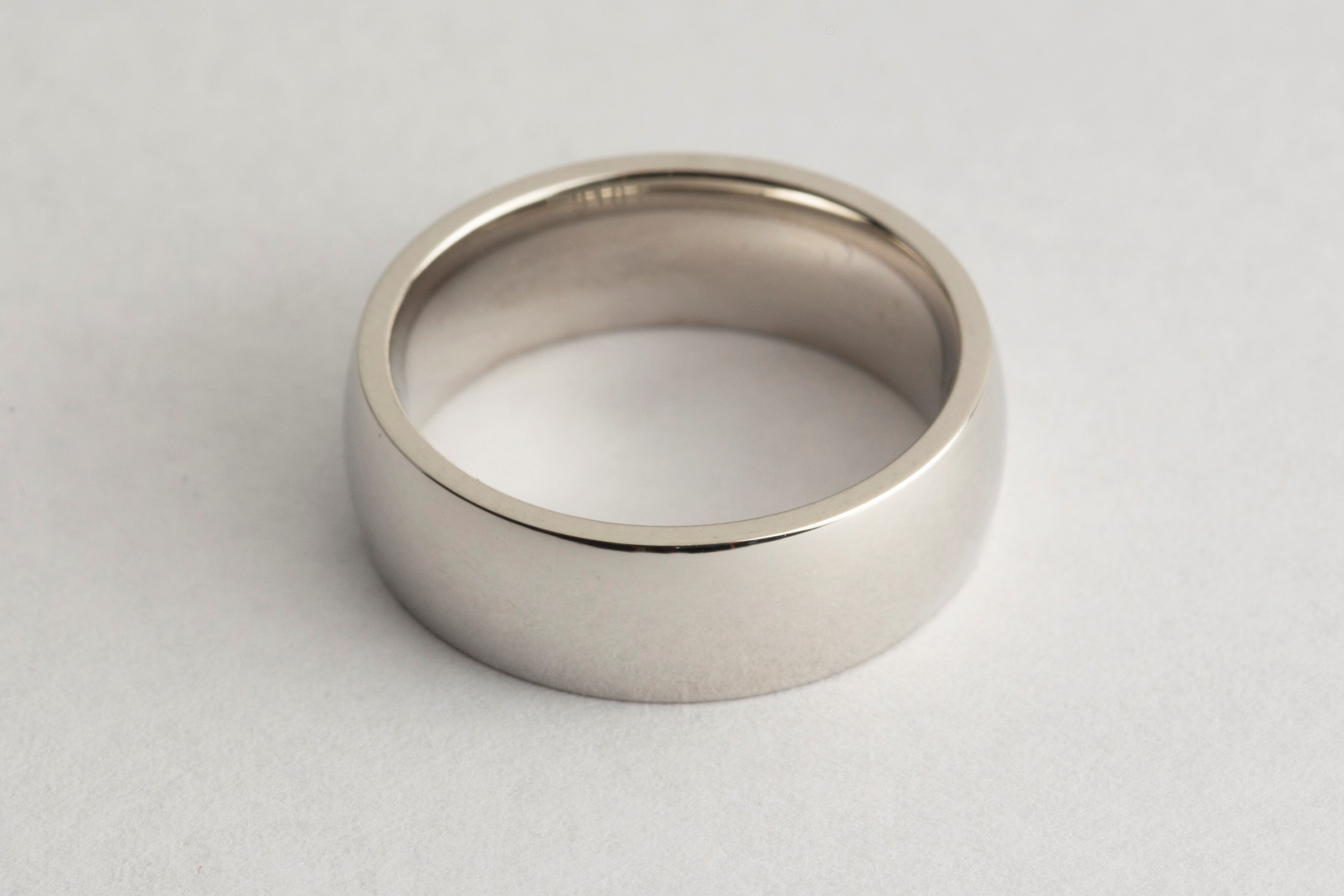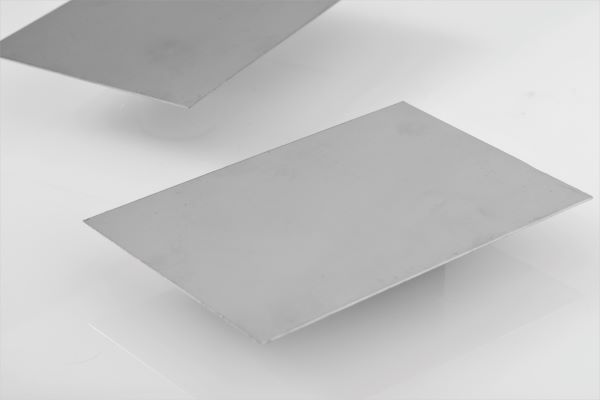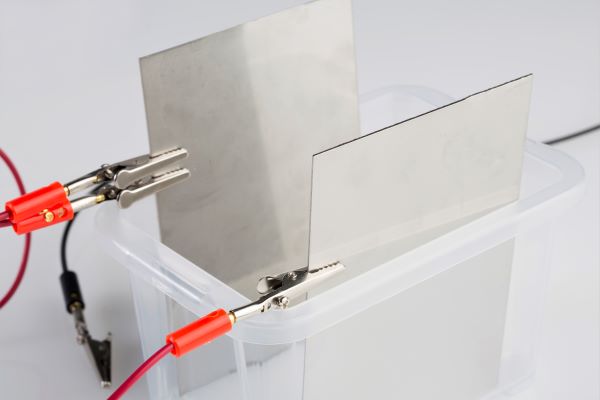
G.S.P Palladium Plating Solution (Tank Plating Only) 1 Litre
Our G.S.P Tank Palladium Solution for tank plating only, is formulated specifically to act as a barrier plate on jewellery, where due to the potential of skin allergies such as Nickel Contact Dermatitis, the usual go-to solution for barrier plating - nickel - is not allowed. Plating a thin layer of palladium before the final plating stage will prevent your gold or other chosen finish, from migrating down (sinking) into certain substrates such as silver, copper, brass and zinc, which causes discolouration in the plated finish shortly after plating. Using a barrier plate will also drastically increase the longevity of the final plated finish.
A palladium solution specifically engineered for barrier plating is an essential metal for jewellers to have in their arsenal. It will not only ensure flawless plating, but also guarantees that jewellery is nickel-free, allergy-free and compliant with EU law.
As only a very thin layer of palladium is needed to form your barrier, your solution will last a very long time.
Palladium is a precious metal belonging to the platinum group of precious metals. Alongside its use as a fantastic barrier layer, palladium is also rising in popularity as a final finish for a wide range of jewellery as it deposits a pleasant warm silvery tone, please see accompanying photo of a ring plated in this palladium solution. Palladium is hardwearing and is highly resistant to tarnishing, making it a great choice as a final finish for jewellery.
This is our G.S.P Tank Plating Palladium Solution which is an alternative version of our regular palladium solution. This palladium solution is formulated for tank plating only in smaller tanks, and has a lower gram per litre palladium content (0.5GPL) compared to our other palladium solution (2GPL). Whilst this will not affect the ability of the solution to tank plate to a high standard, the solution does not have a high enough concentration to be suitable for brush plating or for tank plating with 5 litres or more of palladium solution. Tanks with a capacity of 5 litres or more will require the use of a palladium solution with a higher concentration, as will brush plating, please see: G.S.P Palladium Plating Solution instead.
Please note:
This is a specially formulated palladium solution to act as a suitable barrier layer. Palladium plating solutions in general are not suited; this solution has been advanced to allow for multi-purpose use as both a finish in its own right and as a barrier layer to prolong the lifespan of gold plating or other plated finishes.
For all non-jewellery items that require a barrier plate, we suggest the use of our G.S.P Nickel Plating Solution as this is most cost-effective.
(Image shows 1L bottle)
Overview of use
Instructions for use of:
G.S.P Palladium Tank Plating Solution 0.5GPL - 1 Litre
Pen plating:
N/A
Brush plating:
N/A
Tank plating:
0.01 amps per cm2
Additional notes:
Use as a barrier plate in place of nickel (jewellery/watches etc) as the solution is not known to cause skin allergies.
Tank plate for 40 seconds for a sufficient barrier plate. The solution plates to an identical colour to nickel, but unlike nickel, requires no activation to plate on top of it.
Frequently Asked Questions
What is the difference between this palladium solution and your regular palladium solution?
This is our G.S.P Tank Plating Palladium Solution which is an alternative version of our regular palladium solution. This solution contains a lower concentration of 0.5 grams of palladium per litre versus 2 grams per litre in our other palladium solution. Due to the lower concentration of 0.5GPL, this palladium solution is only suitable for tank plating and cannot be brush plated. Tanks with a capacity of 5 litres or more will require the use of a palladium solution with a higher concentration, as will brush plating, please see: G.S.P Palladium Plating Solution instead.
This solution will also need to be renewed sooner than when using our regular palladium solution, as a less concentrated solution will allow for the plating of less parts before the precious metal content is depleted. Palladium tends to be plated only to a very thin layer to act as a barrier plate, so despite the lower concentration, you will still get plenty of longevity out of this solution in most cases.
If you are unsure which version of our palladium to purchase, please contact us for more information.
Technical Specs
Description:
Palladium tank plating solution
Use:
Used as a nickel substitute as a barrier plate on jewellery. Using nickel during the plating of jewellery is particularly discouraged, as extended wear can lead to nickel contact dermatitis as well as other potential health problems. There are firm regulations in law concerning the use of nickel in jewellery, and these are very complex and difficult to comply with. Therefore, we advocate nickel-free jewellery and the use of palladium as a safe substitute.
Plating modes?
Tank plating only
Does it require heating?
No
Is it suitable for use with G.S.P Brush Plating Probes?
No
Part of Mirror Tech System?
No
Additional information:
Does not cause skin allergies.
Safety information:
This chemical is classed as hazardous, always wear appropriate personal protective equipment (PPE) and ensure that you read and follow the Safety Data Sheet supplied for details on how to stay safe.
Related products
We Accept
![]()
![]()






